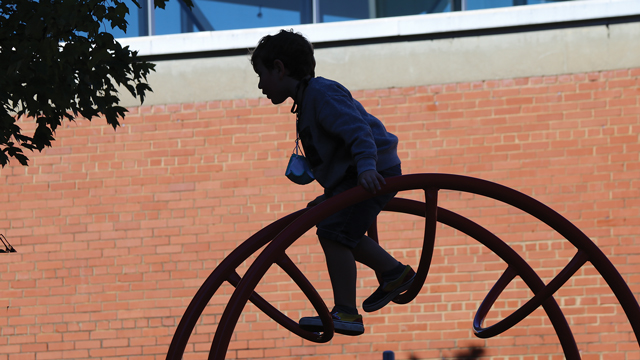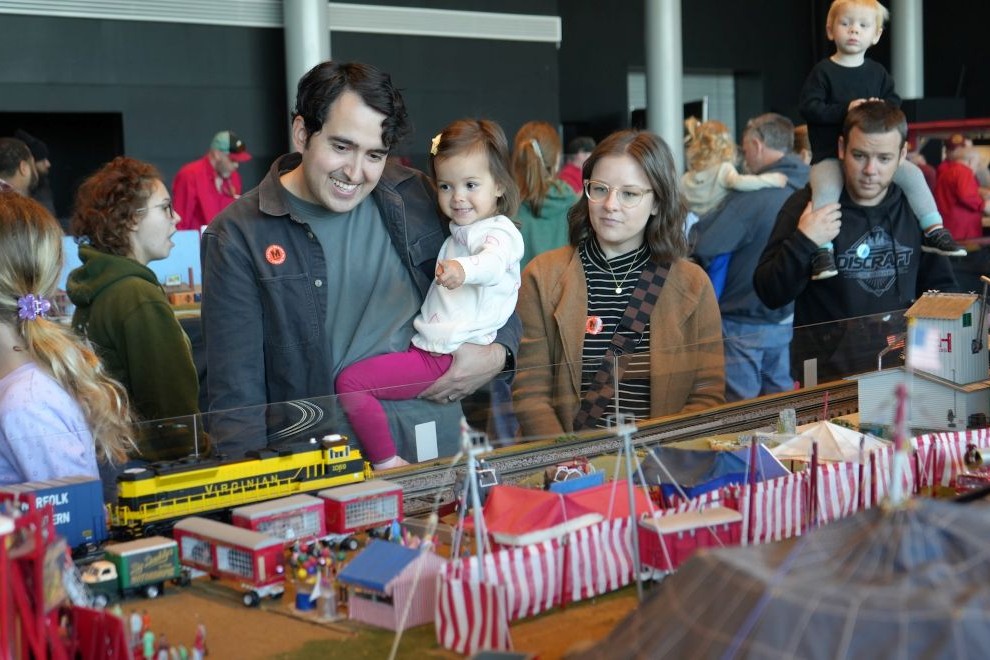Hitesha Patel of Chesterfield, mom of three-year-old Amaiya, says the Children’s Museum of Richmond is hands-down one of her family’s favorite places to visit. She’s not alone, but there’s a unique reason this parent appreciates CMoR as much as she does. “My daughter is an only child, and CMoR gives her the exposure to play, learn, and share with other kids her age – socializing and exploring together,” says Patel, who lives in Chesterfield.
From the time my two children were toddlers right up until the pandemic closed everything down, we also visited CMoR to play, learn, explore, and socialize. Along the way, I have seen my two school-age children blossom as responsible social beings. The camaraderie they shared with strangers under the watchful eyes of parents taught my kids the importance of being kind and careful in a new environment.
CMoR exhibits opened my children’s eyes to their interests and capabilities. My son fell in love with dinosaurs, and my daughter was mesmerized by the scarf flying through the pipes. They climbed in the Living Tree House, acted like medics on the ambulance, and loved the iconic apple tree. It was a thrill to create masterpieces in the art studio, service a car, or be a teacher.
The food-themed exhibits, including the grocery store, took my kids from farm to table and provided them with a taste of independence as they play-acted what they saw in the real world. Plus, working and playing in the grocery exhibit made my kids much more helpful when we actually went grocery shopping together every week.
It’s all part of the tone for the CMoR play environment that strives to make every child and family from every walk of life feel included and valued.
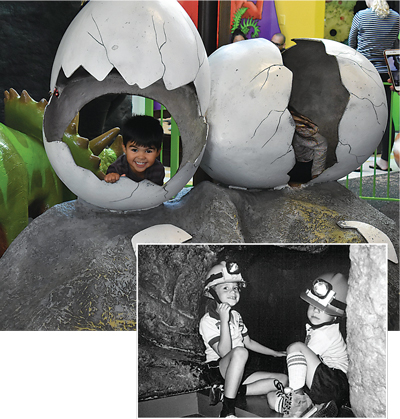
How It Started
Founded forty years ago by Sara F. Markham in an abandoned elementary school in Navy Hill, the museum has come a long way to become an integral part of early childhood in the Richmond region.
“CMoR defines Richmond in many ways,” says Barbara Markham Smith, daughter of the museum’s founder. “With very few similar spaces in the region, the museum has a tradition of reaching children everywhere, bringing them together. Every family who comes here develops a sentimental attachment to it, be it the timeless exhibits like the grocery store, stage, or Legendary Santa who visits every year.”
CMoR moved from Navy Hill to its Broad Street facility in 2000 and also operates a location in Chesterfield.
When I visited CMoR recently, I was struck by how fresh and updated the Downtown location looks. Gorgeous murals on the walls, painted by artists Shaylen Broughton and Hasson Robert, are a testament that the museum has become more intentional in becoming multicultural and inclusive. When the Fredericksburg and Short Pump locations closed permanently in June and August 2020 respectively, the Downtown and Chesterfield locations were able to repurpose the interactive exhibits and equipment, reinvigorating play at those locations for the children of RVA.
This holiday season, we have friends who will visit CMoR for Legendary Santa, celebrating his eighty-fifth year in Richmond and his sixteenth year interacting with families at the museum. Virtual visits with Santa through CMoR will be an option again this year.
We have plans to check out the World of Holiday Traditions and Culture exhibit that promises to fascinate with glimpses of world cultures. Beginning the day after Thanksgiving, the exhibit will be in the lobby and will include learning games for families. The Holiday Village highlights Christmas, Diwali, Eid, Hanukkah, Kwanzaa, and the Lunar New Year, all presented through a series of Fan-style homes that feature the symbols, traditions, and customs that enrich the holiday season in our own communities and around the world.
Power of Play in Action
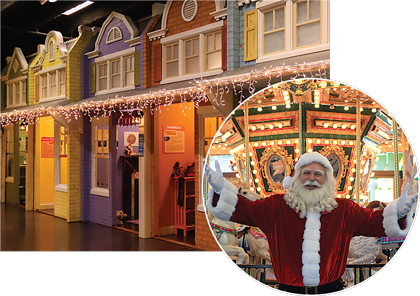
“At CMoR, play is at the core of all that we do and decisions that we make… because as adults, we should take the need for play seriously,” says Danielle Ripperton, CMoR’s executive director.
“The young children in our lives need us to celebrate and embrace play as the way in which they learn best.”
Play allows children to be creative while developing imagination, dexterity, and emotional intelligence. It is through play that children at a very early age learn about the world around them – especially if the environment is one where children from different backgrounds come together, bringing their cultures with them.
With a mission of providing a meaningful environment that can enhance interactions for both children and their caregivers, CMoR supports what early childhood educators call the 5 Cs: critical thinking, creative thinking, communication, collaboration, and citizenship skills.
The four-pronged framework established by the museum explicitly guides caregivers to deepen the impact on young children beyond the museum experience: family/caregiver engagement supports and enhances learning and involvement; play focus is how children understand their world; literacy is a critical underpinning for school readiness; and essential life skills support executive function.
Julia Nguyen, mom of a two-year-old, says it’s important for children to practice their sensory and cognitive skills through play outside the home and the classroom. “Maleena really loves the toddler area and the theater stage. She loves the free-range area, so she can run around and explore the little details they have,” says Nguyen. “She also enjoyed the water station… seeing how clouds form and retain water.”
In addition to the museum experience for preschoolers, CMoR Downtown houses The Sprout School, a Reggio-inspired early education program for ages two-and-a-half to five years. The Sprout School location, operated by the YWCA, opened at CMoR in September 2016. The full-day program offers financial aid and encourages all families to apply, regardless of income.

Play During a Pandemic!
Sarah Moseley, director of development and marketing at CMoR, says the museum has responded to the pandemic with safety protocols to keep on-site visiting safer for kids and families. “Masks are mandatory for ages five and older, and online ticket reservations are encouraged,” says Moseley. “There are dirty bins for toys and other things that kids may inadvertently put in their mouths.” She adds that every exhibit is sanitized on a rotating schedule by volunteers and CMoR play guides.
Moseley has these tips for parents and grandparents visiting the museum for the first time:
• Children and their adults should wear comfortable play clothing.
• Keep water and snacks on hand which can be enjoyed at the benches on the museum grounds.
• Make sure you have back-up masks and sanitizer.
• Keep an extra set of clothing on hand for children who enjoy the water play.
What’s New at the Museum?
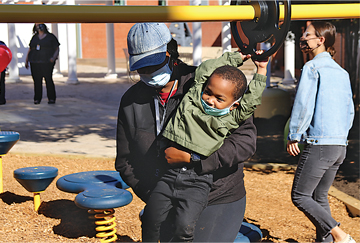
In addition to new exhibits inside the Downtown location, the museum’s KABOOM! playground, sponsored by The CarMax Foundation, opened in September. This new outdoor space and the music studio space next to it encourage outdoor play for children across different age groups. The playground includes wheelchair accessible play areas, multicultural play-mats, and English and Spanish signage.
Unstructured outdoor play helps kids learn how to share, take turns, and develop other healthy behavioral skills. When children play outdoors, they use all their senses, compared to most electronics that only incorporate sight and hearing. When children run, jump, climb, slide and ride toys that require balance, they also build gross motor skills and start developing a habit of being active.
Expanded outdoor play space that is connected to the KABOOM! playground is set to open early in 2022, giving area kids and families more opportunities to spend time outdoors while playing safely.
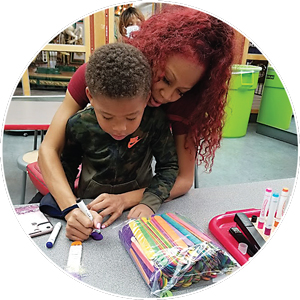
Inclusive and Welcoming Space
One of the perks of living in the Richmond metropolitan area is the diversity children experience at CMoR and other parks and playgrounds. It is akin to what one may find in a big metropolitan area while having the coziness of a smaller town.
When Nguyen, who lives in Glen Allen, was looking for a venue to meet out-of-town family for a play date, she chose CMoR. “We had a family come down from Northern Virginia and they brought their cousins, so we decided to go there since it had something for each age group,” says Nguyen. “We loved their art area as well. My family and Maleena’s cousins all sat down and made paper puppets with the art supplies.“
Children from every walk of life, of differing abilities, and from all around the world coming together is an enriching experience in itself. When kids are exposed to different cultures, children learn to ask questions with an open mind and develop a healthy curiosity about people while working on their empathy muscles. When kids hear different languages and accents and see different attire from the safety of a play area they are familiar with, it’s similar to the travel many of us are missing.
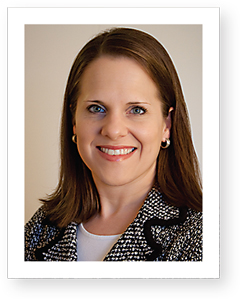
Inclusive play areas promote understanding, help reduce prejudices, and support social integration. All-encompassing environments allow people of all ages and abilities to develop independence, and feel included and valued while contributing to meaningful play experiences.
Barbara Markham Smith, who serves on CMoR’s board of trustees, is fascinated with the leaps CMoR has taken over the four decades since her mother founded it. “The museum’s outreach program is really tremendous,” says Smith. “They have made a conscious and consistent effort to connect to all members of the community, from planning to implementation.”
To that end, CMoR offers educational trips in three formats: museum-based field trips (where groups of children visit CMoR), Children’s Museum To-Go (CMoR provides the resources to schools), and virtual field trips (where schools tour and visit CMoR virtually via screens from their classrooms). Each program accommodates preschools, elementary schools, childcare facilities, and homeschool groups. CMoR also offers reduced rates for SNAP card or WIC card holders and has scholarships for low-income families who want to enjoy the facilities.
“We are here for all, regardless of gender or ability. We provide easy access to all. This is a safe place where they (children) can learn through play. Our doors are always open,” says Candace Ross, guest services operations manager at CMoR.
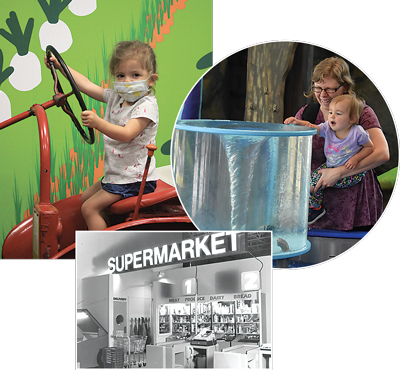
Helping Parents and Caregivers
While CMoR is designed to enrich play for children, the museum is also a learning space for adults who love children. Ripperton describes CMoR as a safe haven “where parents can learn with children and about children. In addition to being a place of fun, it is a non-judgmental zone where parents can disconnect and spend quality time with their child,” says Ripperton.
She says when parents engage with their children at CMoR, they can better understand their child’s ability and how best to support them. “It certainly enables parents with confidence in their parenting,” says Ripperton.
While perfect for caregivers of all ages and abilities, many grandparents and older relatives appreciate interacting with their little ones in a safe play environment that promotes imagination and hearkens back to a simpler pre-digital time. They also might remember taking their own kids to the original location forty years ago in Navy Hill.
And that is the timeless impact of creative play at CMoR. “For generations to come, we want families to have a place to come – whether it’s one year or twenty years from now,” says Ripperton.


